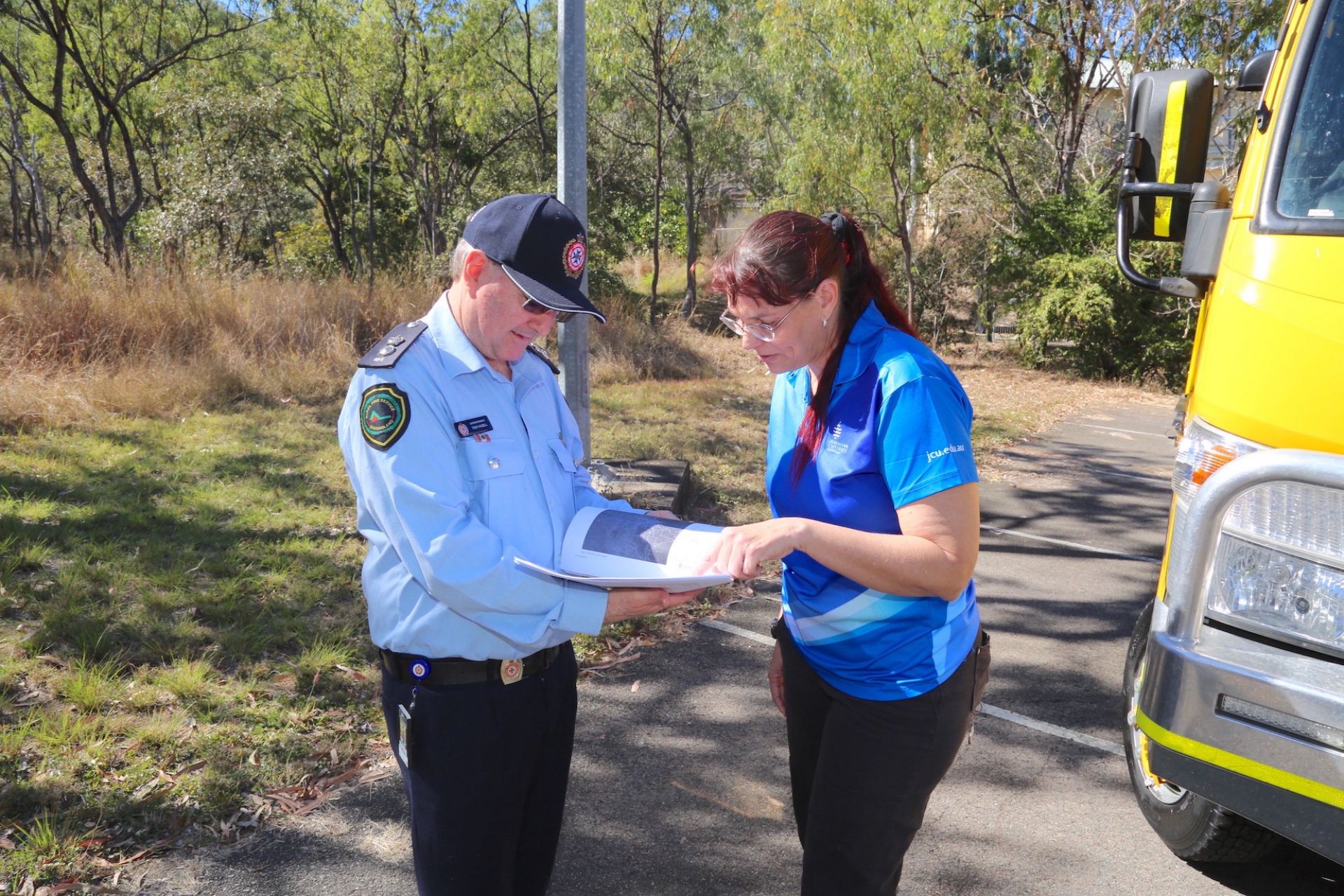Media Releases
Bushfire readiness warning for Townsville communities

More than two thirds of residents living in three bushfire-prone Townsville communities do not have an evacuation plan.
That’s the finding from a new report by James Cook University’s Centre for Disaster Studies as bushfire season heats up in the region.
Commissioned by Queensland Fire and Emergency Services (QFES), Centre researcher Dr Yetta Gurtner analysed the results from surveys conducted by JCU students of residents in Nome, Bluewater and Magnetic Island about their level of fire preparedness.
Each area is identified as a “peri-urban community”, which refers to residents who live in urban areas that are in proximity to bushland.
“I was a little surprised that less than one third of residents surveyed had an active evacuation plan for bushfire season,” Dr Gurtner said.
“What was particularly concerning was that as we went through the results from these respondents, the people in these communities tend to be from an older demographic than the general Townsville population.
“There were also a lot of indications of medical illnesses and physical injuries, so in that context, these are more vulnerable people, or people who need help when it comes to an evacuation.”
The survey also found that:
- Almost one in ten respondents (9.5 per cent) indicated they do not prepare for local bushfire hazards.
- 43 per cent of respondents rated the bushfire hazard in their locality as high or very high, but almost 80 per cent of respondents self-assessed the bushfire hazard to their personal dwelling/property as moderate, low and very low.
- In respect to local hazards (including bushfires) 52 per cent believed their neighbours were at risk, particularly in regards to cleaning up their property. Despite this, only one in five respondents felt it was important to talk to their neighbours about the issue and;
- Over 23 per cent of respondents were sceptical about their local community's capacity to recover from a natural hazard in a short period of time.
Dr Gurtner said fire was a real risk for people in peri-urban communities and even more so for those identified by QFES as living in “I Zones” – households which encroach upon vegetation.
“QFES specified to us a number of streets and residents in each of those zones that they wanted us to get the most information out of,” she said.
“They are the people considered most at risk.”
Dr Gurtner urged any resident living in an area at high risk of bushfire to make an evacuation plan and be prepared in the event of an emergency.
“While a large percentage of those people surveyed did work from home or stayed at home, over 50 per cent worked elsewhere and would take anywhere between 25 minutes and hour-and-a-half to get home,” she said.
“If your house is under threat from fire and you’re at work, you potentially wouldn’t have a house to come back to.
“That’s why we encourage those preventative measures like cleaning your gutters and cutting trees back. You at least then have some measure of protection for your house.”
And Dr Gurtner encourages better communication with neighbours if residents are concerned about potential fire hazards on nearby properties.
“We talk about building trust amongst your neighbours and getting comfortable with talking to them,” she said.
“If you are genuinely concerned about something, you shouldn’t be afraid to raise a bushfire risk with your neighbour.”
QFES will now review the report and take its findings into consideration.
Media enquiries: michael.serenc@jcu.edu.au